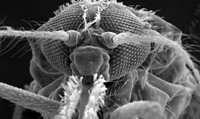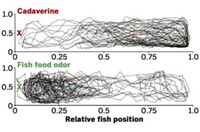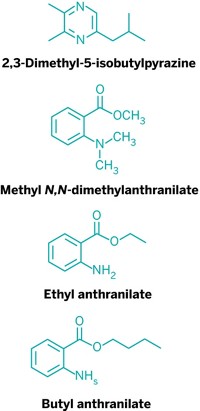Advertisement
Grab your lab coat. Let's get started
Welcome!
Welcome!
Create an account below to get 6 C&EN articles per month, receive newsletters and more - all free.
It seems this is your first time logging in online. Please enter the following information to continue.
As an ACS member you automatically get access to this site. All we need is few more details to create your reading experience.
Not you? Sign in with a different account.
Not you? Sign in with a different account.
ERROR 1
ERROR 1
ERROR 2
ERROR 2
ERROR 2
ERROR 2
ERROR 2
Password and Confirm password must match.
If you have an ACS member number, please enter it here so we can link this account to your membership. (optional)
ERROR 2
ACS values your privacy. By submitting your information, you are gaining access to C&EN and subscribing to our weekly newsletter. We use the information you provide to make your reading experience better, and we will never sell your data to third party members.
Environment
Fruity Odorant Befuddles Mosquitoes
The food-flavoring agent ethyl pyruvate clogs odor receptors thereby hiding humans from the pesky insects
by Lauren K. Wolf
December 9, 2013
| A version of this story appeared in
Volume 91, Issue 49
Mosquitoes locate their human meals by catching a whiff of carbon dioxide and skin odor. Scientists want to understand the workings of all the olfactory receptors insects use to detect these compounds to develop safer and more effective repellents. A research team led by Anandasankar Ray of the University of California, Riverside, has discovered that the receptors on one set of mosquito nerve cells, called the cpA neurons, not only detect CO2 plumes but also respond to human odorants (Cell 2013, DOI: 10.1016/j.cell.2013.11.013). After the researchers exposed mosquitoes to the inhibitor butyryl chloride, which disables the dual-response receptors on the cpA neurons, the insects could no longer find glass beads coated with human foot odor. But butyryl chloride is a reactive and toxic compound not suitable as a repellent, so the team used a custom chemical informatics program to seek alternatives. Using the structures of known cpA activators to screen about 500,000 compounds, the team hit on ethyl pyruvate, a fruity-smelling food-flavoring agent. When mosquitoes were dosed with the chemical, their attraction to a human hand decreased significantly.





Join the conversation
Contact the reporter
Submit a Letter to the Editor for publication
Engage with us on Twitter